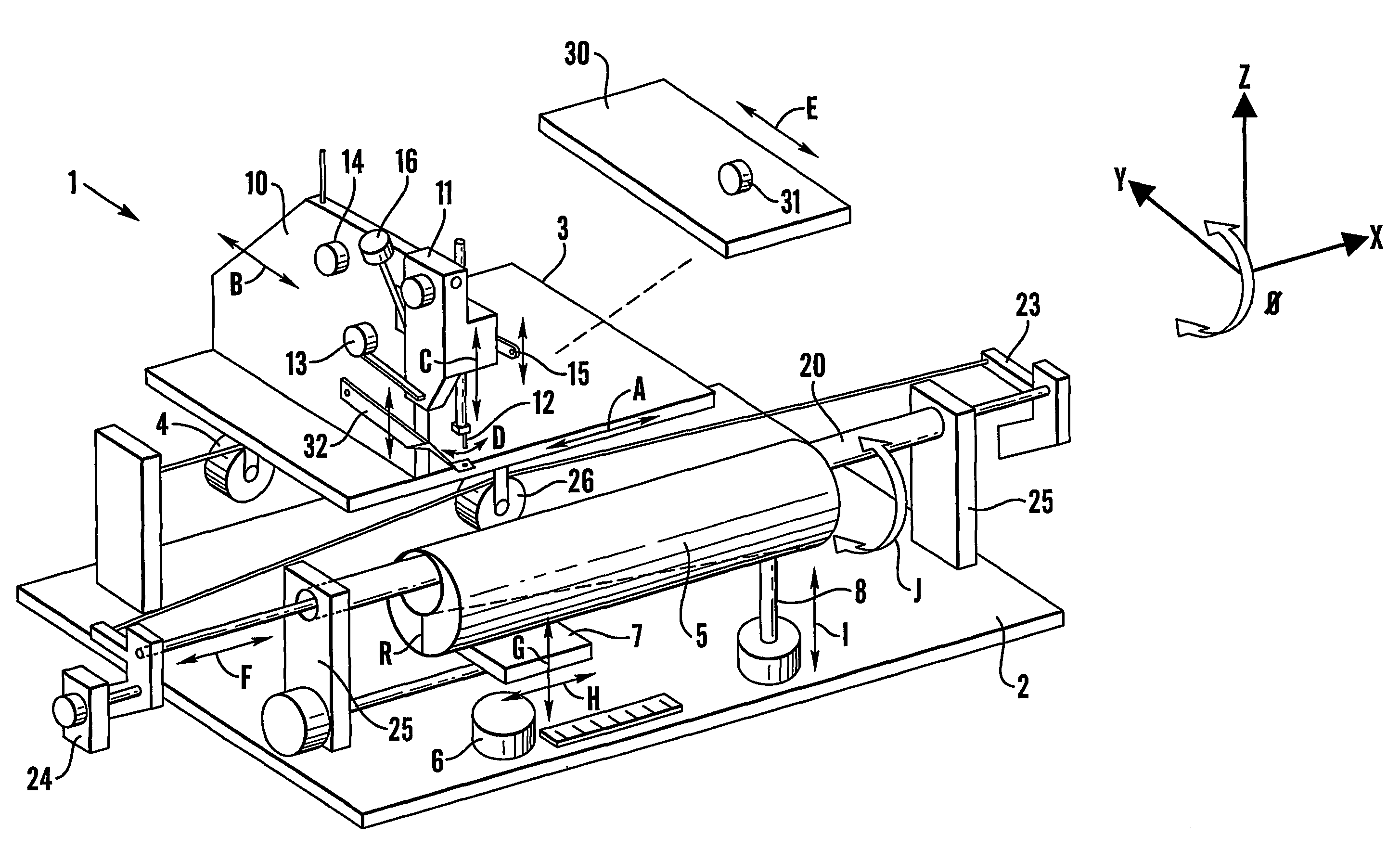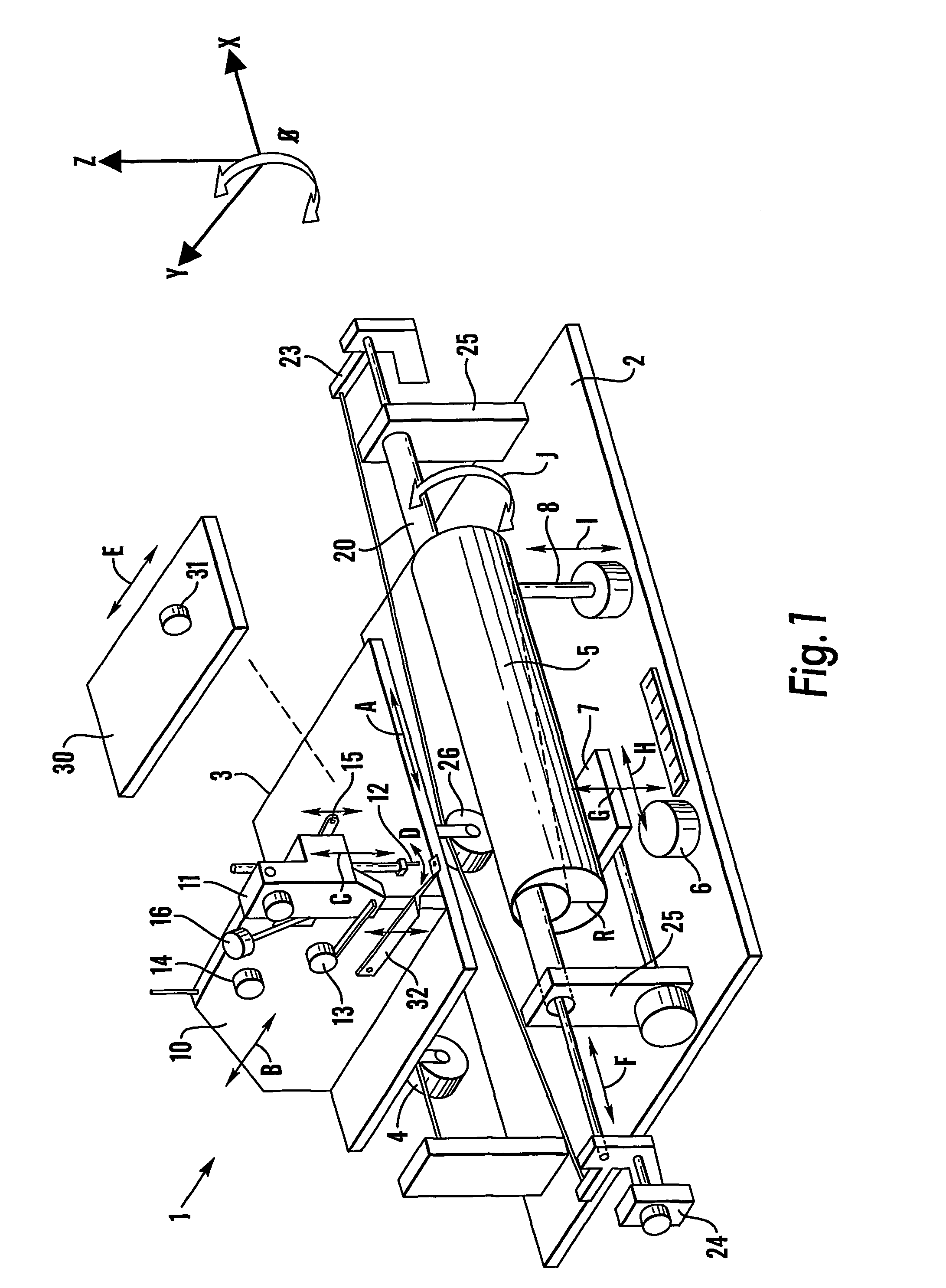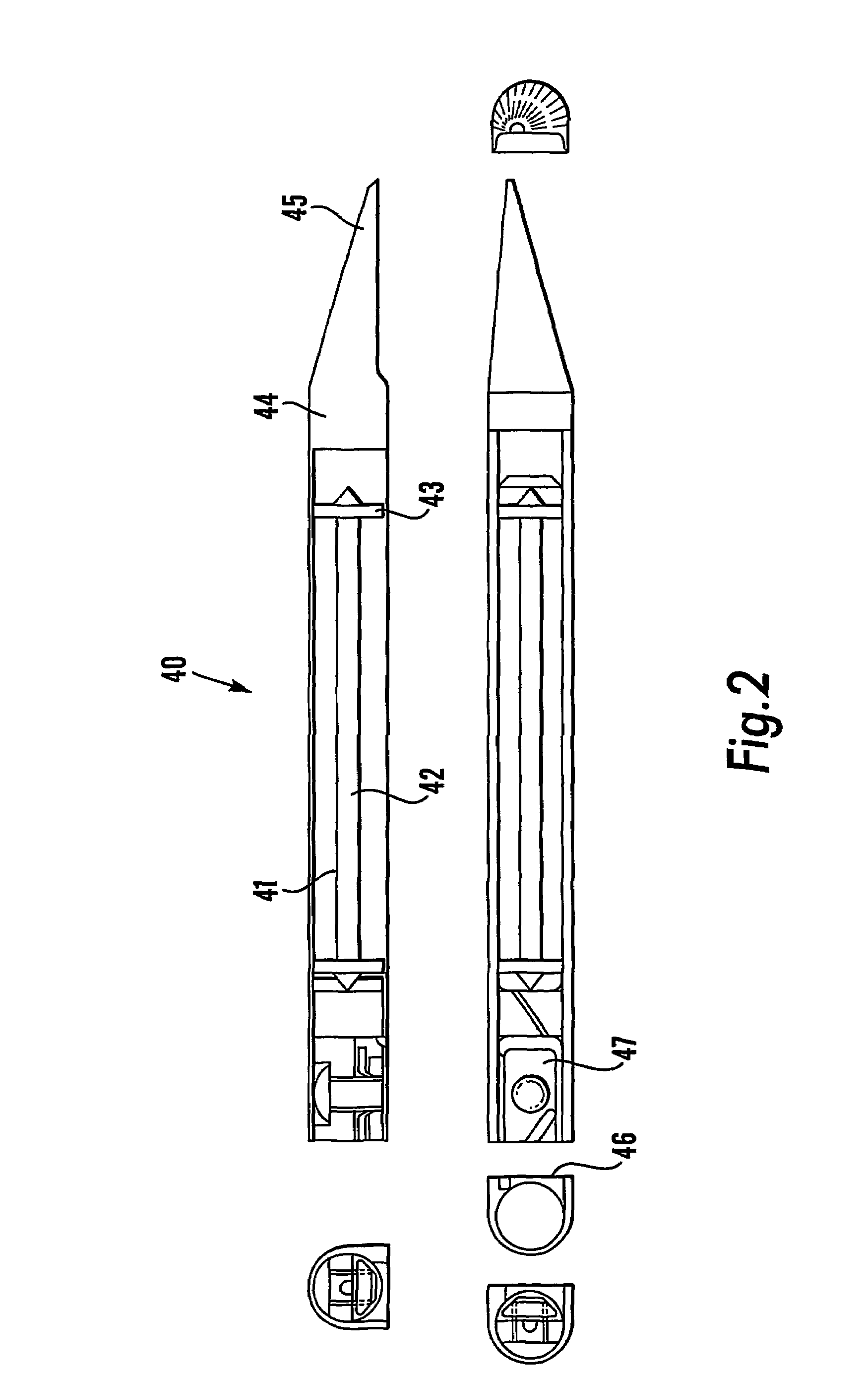Method for manufacturing stent-grafts
a manufacturing method and stent technology, applied in the field of sewing machines, can solve the problems of high time and cost associated with attaching these sutures, high cost of assuring the quality of every stitch, and patient's health can be particularly serious, so as to increase the friction acting on the second thread
- Summary
- Abstract
- Description
- Claims
- Application Information
AI Technical Summary
Benefits of technology
Problems solved by technology
Method used
Image
Examples
Embodiment Construction
[0078]Turning to FIG. 1, sewing machine 1 comprises a base 2 having mounted thereon a sew arm 10, shuttle tube 20 and stent table 30.
[0079]Graft 5 is held by a pair of grips (not shown) at either end of graft 5 with shuttle tube 20 passing through the lumen of graft 5 and being supported at either end by shuttle tube supports 25 which are also mounted on base 2.
[0080]Sew arm 10 is mounted on carriage 3 which is driven by carriage drive 4 in directions parallel and perpendicular to shuttle tube 20 (as indicated by arrows A and B respectively) so that sew arm 10 can be positioned as required relative to graft 5.
[0081]Sew arm 10 comprises a needle head 11 which projects over the edge of carriage 3 and which has needle 12 which can be driven up and down relative to graft 5 (as indicated by arrow C) and side to side (so-called “needle wobble”) by needle wobble drive (as indicated by arrow D). Needle head 11 controls the deployment of the top thread (not shown), which passes from a spool ...
PUM
 Login to View More
Login to View More Abstract
Description
Claims
Application Information
 Login to View More
Login to View More - R&D
- Intellectual Property
- Life Sciences
- Materials
- Tech Scout
- Unparalleled Data Quality
- Higher Quality Content
- 60% Fewer Hallucinations
Browse by: Latest US Patents, China's latest patents, Technical Efficacy Thesaurus, Application Domain, Technology Topic, Popular Technical Reports.
© 2025 PatSnap. All rights reserved.Legal|Privacy policy|Modern Slavery Act Transparency Statement|Sitemap|About US| Contact US: help@patsnap.com



